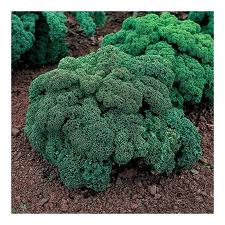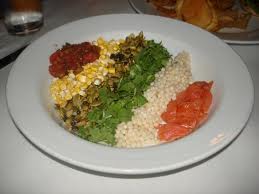
One of my litmus tests for how healthy a vegan's diet truly is, is to listen to how they describe what they eat. If they focus on telling me what they DON'T eat, and have a limited list of what they DO eat, I start to consider that what we're describing is an eating disorder, not a vegan eater.
Here's a challenge to encourage you to be more vegan and less disordered. It comes from the blog http://www.lunchboxbunch.com/., and it's a list of 100 vegan foods. I've been instructed to italicize foods I'd never try, and bold face foods I have eaten. And to encourage you to share the challenge on your own blogs.
I'm a pretty adventurous eater so there are no italics. I did better than I thought I would, actually, since I am not 100% vegan myself. I now have some great items to add to my own list!
Have fun!
1. Molasses
2. Cactus/Nopales
3. Scrambled Tofu
4. Grilled Portobella Caps
5. Fresh Ground Horseradish
6. Sweet Potato Biscuits
7. Arepa
8. Vegan Cole Slaw
9. Ginger Carrot Soup
10. Fiddlehead Ferns
11. Roasted Elephant Garlic
12. Umeboshi
13. Almond Butter Toast
14. Aloe Vera
15. H and H Bagel NYC
16. Slow Roasted Butternut Squash
17. White truffle
18. Fruit wine made from something other than grapes
19. Freshly ground wasabi
20. Coconut Milk Ice Cream (not store bought)
21. Heirloom tomatoes
22. Orchard-fresh pressed apple cider
23. Organic California Mango (in season Sept-Oct only)
24. Quinoa
25. Papaya Smoothie
26. Raw Scotch Bonnet (habanero) pepper (just a bite!…hot!
27. Goji Berry Tea
28. Fennel
29. Vegan Chocolate Chip Cookie
30. Radishes and Vegan Buttery Spread
31. Starfruit
32. Oven fresh Sourdough bread
33. Sangria made with premium fruit and juices
34. Sauerkraut
35. Acai Smoothie
36. Blue Foot Mushrooms
37. Vegan Cupcake from Babycakes nyc
38. Sweet Potatoes and Tempeh combo
39. Falafel
40. Spelt Crust Pizza
41. Salt and Pepper Oyster Mushrooms
42. Jicama Slaw
43. Pumpkin Edamame Ginger Dumplings
44. Hemp Milk
45. Rose Champagne
46. Fuyu
47. Raw Avocado-Coconut Soup
48. Tofu Pesto Sandwich
49. Apple-Lemon-Ginger-Cayenne fresh-pressed juice…with Extra Ginger
50. Grilled Seitan
51. Prickly pear
52. Fresh Pressed Almond Milk
53. Concord Grapes off the vine
54. Ramps
55. Coconut Water fresh from a young coconut
56. Organic Arugula
57. Vidalia Onion
58. Sampler of organic produce from Diamond Organics
59. Honeycrisp Apple
60. Poi
61. Vegan Campfire-toasted Smores
62. Grape seed Oil
63. Farm fresh-picked Peach
64. Freshly-made pita bread with freshly-made hummus
65. Chestnut Snack Packs
66. Fresh Guava
67. Mint Chocolate Chip Oatmeal Cookies
68. Raw Mallomar from One Lucky Duck, NYC
69. Fried plantains
70. Mache
71. Golden Beets
72. Barrel-Fresh Pickles
73. Liquid Smoke
74. Meyer Lemon
75. Veggie Paella
76. Vegan Lasagna (raw optional)
77. Kombucha
78. Homemade Soy Milk
79. Lapsang souchong
80. Lychee Bellini
81. Tempeh Bacon
82. Sprouted Grain Bread
83. Lemon Pepper Tempeh
84. Vanilla Bean
85. Watercress
86. Carrot you pulled out of the ground yourself
87. Vegan In-Season Fruit Pie
88. Flowers
89. Corn Chowder
90. High Quality Vegan Raw Chocolate
91. Yellow fuzz-free Kiwi
92. White Flesh Grapefruit
93. harissa
94. Coconut Oil
95. Jackfruit
96. Homemade Risotto
97. Spirulina
98. Seedless 'Pixie' Tangerine
99. Gourmet Sorbet, not store bought
100. Fresh Plucked English Peas





















